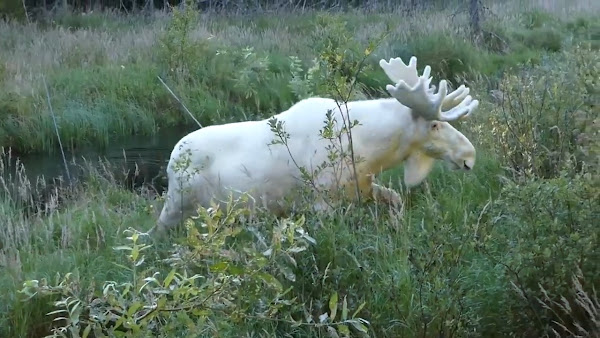An uncommon occurrence was witnessed in Northern Ontario as an ice white-legged moose was observed crossing a road. This sighting is noteworthy due to the rarity of this particular moose subspecies. The animal’s striking appearance, with its white legs and dark body, is a result of a genetic mutation. The sighting has garnered attention from wildlife enthusiasts and researchers alike, as it provides an opportunity to study and learn more about this unique subspecies. The observation of this moose serves as a reminder of the importance of preserving and protecting our natural world and its diverse inhabitants.
A rare sighting of an ice white-legged moose was reported in Northern Ontario recently. The unique animal was seen crossing a road near Sudbury, Ontario and has been described as an awe-inspiring sight. The moose, which is believed to be a juvenile male, was spotted by a local resident who immediately alerted the Ontario Ministry of Natural Resources and Forestry. After a brief investigation, it was determined that the moose was a rare white-legged species that is native to the area.
The ice white-legged moose is a rare breed that is rarely seen in the wild, and it is believed to be one of only a few dozen currently living in the region. The white-legged moose has a unique coloration that is characterized by its white legs and light brown coat. The moose also has a small white spot on its forehead, which is believed to be a result of a genetic mutation. This sighting is a unique and exciting event for wildlife enthusiasts in the region.
Ice white-legged moose are incredibly rare and can be difficult to spot in the wild. This individual was most likely passing through the area and will hopefully continue its journey safely. The ice white-legged moose is an incredible animal, and its sighting in Northern Ontario is a reminder that nature is full of surprises. It is a reminder to be mindful of our environment and to appreciate the beauty of the natural world.











